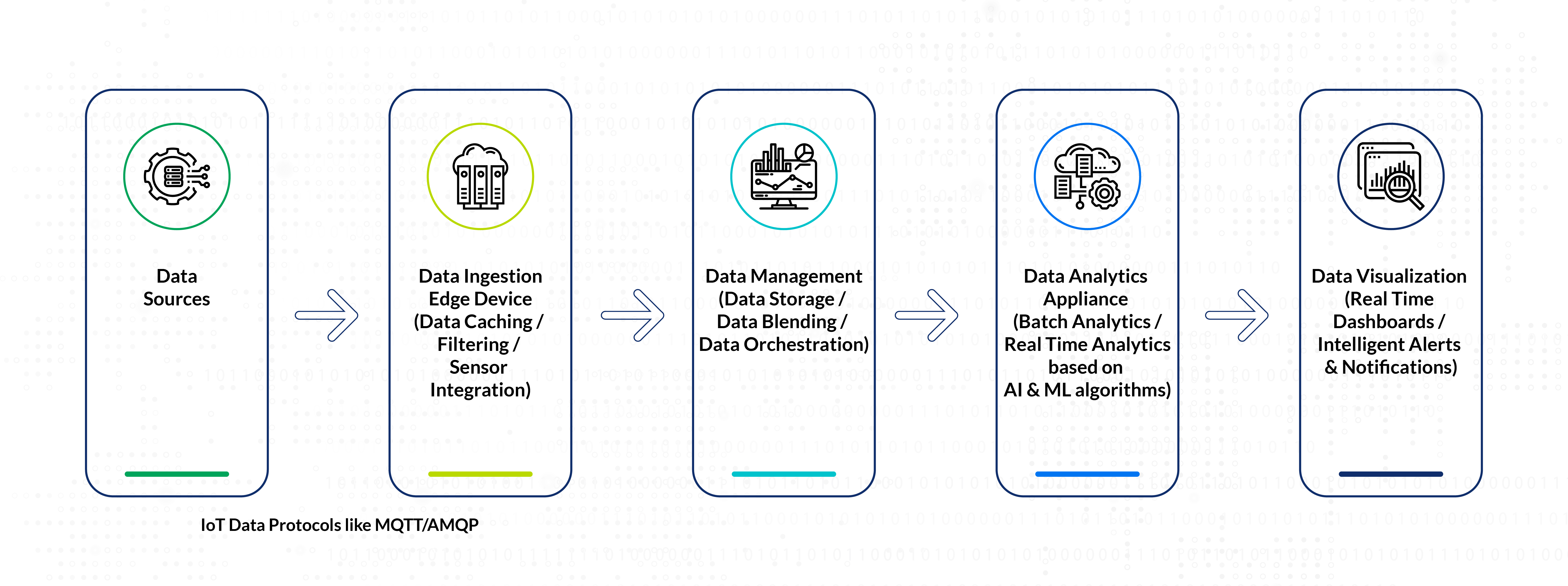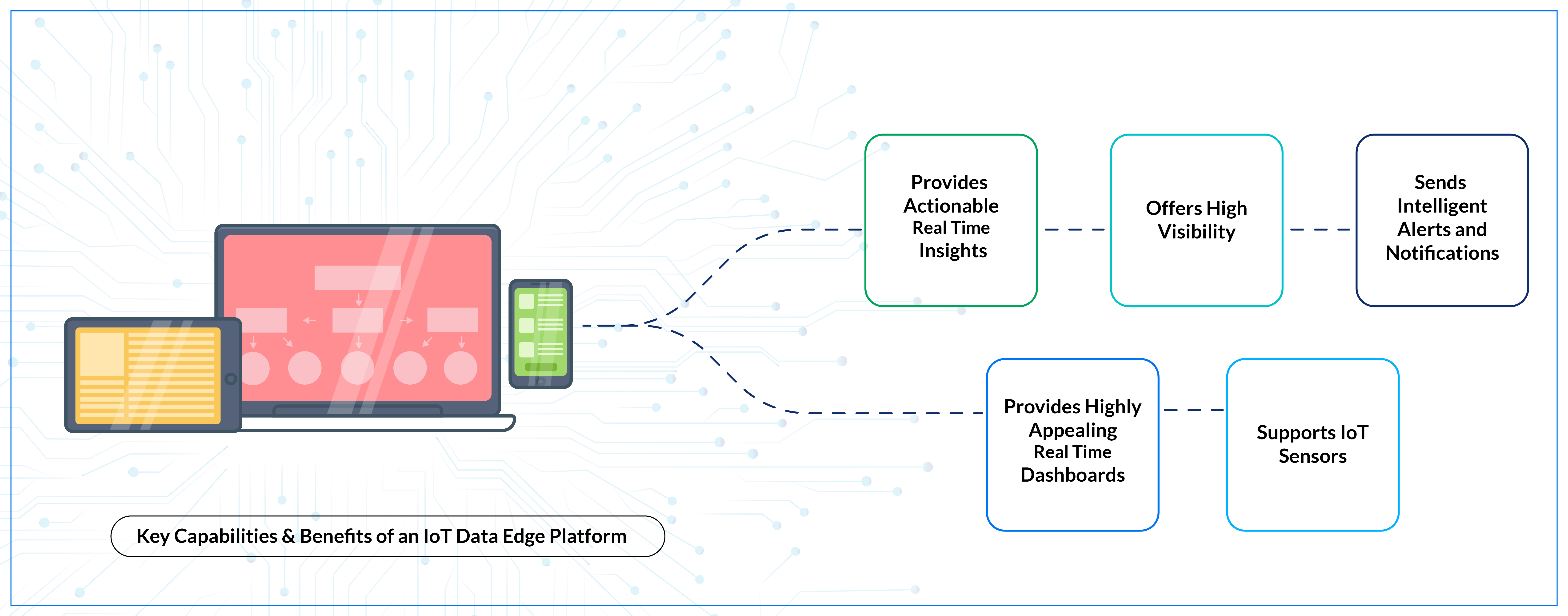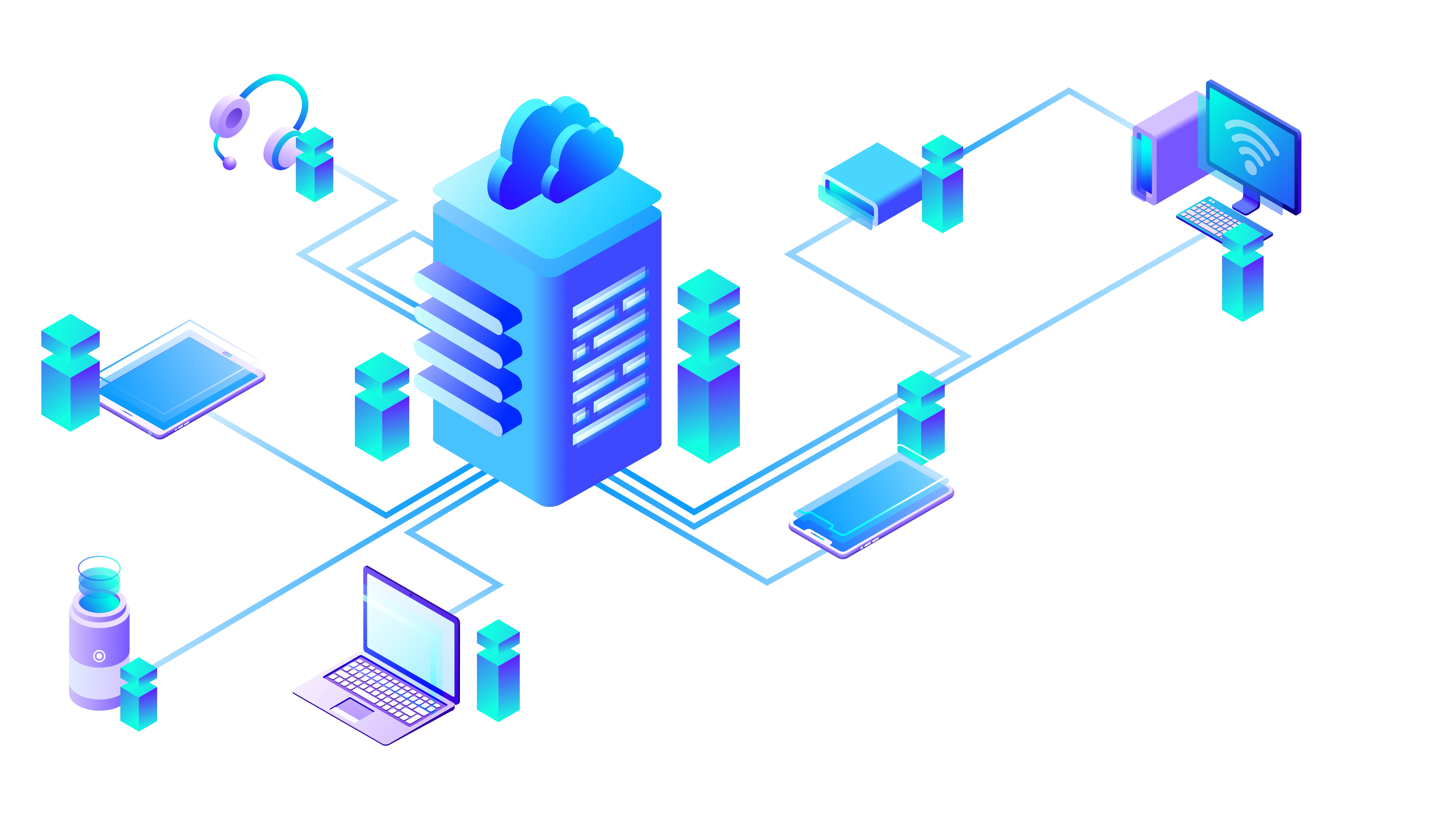



Data and Internet of Things
Today, a typical manufacturing / industrial environment is governed by machines housed with Internet of Things (IoT) sensors designated to perform certain tasks. These sensors generate huge data points like temperature, electrical current, voltage, power, and rotational speed). These are generated at a high rate and measured in messages/second.
It is not uncommon in a huge environment with these IoT sensors generating terabytes of data. In this blog part, you will get insights on the overview of IoT Data Edge Platform and its high-level architecture.
Data points generated by sensors describe a lot about the machines’ performance and health. A pre-emptive maintenance of a failing machine implemented with IoT enables organizations save operations cost, reduce service downtime, service interruptions and perhaps human lives too.
For smooth and continued functioning of various services in the environment, it is essential that we have an Intelligent Edge Platform system. A system that can ingest huge amounts of data, coming at a high velocity, from different data sources.
Post secure data ingestion, the system should store data in efficient data lakes for real-time analysis. The processed data is then shown on UI dashboards or visualization tools like Power BI or Tableau.
Demystifying IoT Data Edge Platform Architecture
A typical IoT Data Edge platform has the following architectural layers:

1. Data Sources: These are IoT sensors that generate huge amounts of data in various data formats. These data formats include JSON, InfluxDB line protocol format, any other supported proprietary data format.
2. Data Ingestion Edge Device: This is an important part of the IoT Platforms residing near the data sources (typically in a factory location). The sensors are registered with the Edge Device using standard IoT data protocols. The protocols mostly include Advanced Message Queuing Protocol (AMQP) or Message Queuing Telemetry Transport Protocol (MQTT). They send a huge amount of machine health parameters to it. This data is temporarily cached in the Edge device, before being filtered and sent to the IoT Data Analytics Appliance and Data Lakes.
3. Data Management: This is essentially a data lake where data from one or more Edge devices arrive. Here, data management activities like data blending, data orchestration will be carried out.
4. Data Analytics Appliance: This module of the IoT Data Platform picks up messages from the data lake. These are deployed in a secure data centre environment. The appliance has advanced capabilities based on Machine Learning algorithms (ML) & Artificial Intelligence (AI) algorithms. This is required for data analytics in various modes such as real time, batch processing, hybrid processing. Here, you can define threshold values for the data points. And based on the threshold breaches, it can generate intelligent alarms and send notifications to targeted audiences like administrators, machine operators, etc.
5. Data Visualization Layer: This is an essential component of the IoT Edge Platform and presents meaningful graphs and real-time dashboards to end users. The user also gets to see the alarms and notifications generated by the system.
Key Capabilities & Benefits of an IoT Data Edge Platform
1. Provides actionable real-time insights into critical operations based on advanced AI & ML analytics of IoT sensors data.
2. Offers high visibility at site-level or at individual IoT sensor-level.
3. Sends intelligent alerts and notifications to operations staff about machine anomalies and impending service downtimes.
4. Provides highly appealing real-time dashboards and graphs to make visual sense of the data.
5. Supports IoT sensors from different vendors via industry standard IoT data protocols like MQTT, AMPQ, Modbus, etc.

Implementing & Deploying IoT Data Edge Platform
The IoT Data Edge Platform is usually developed based on microservices architecture and its various services. These include AMQP, Modbus, MQTT, Data Ingress & Egress, Message Brokers, etc. that are deployed as pods in a Multi-Node Kubernetes Cluster.
The Kubernetes Cluster is created on a high configuration bare metal Linux server or a VMware vSAN Cluster with Cloud Native Storage policy configured. This provides persistent storage to various pods of the IoT Data Edge Platform software. After making a few changes, the IoT Data Edge platform could be run on managed Kubernetes deployments. These include Amazon Elastic Kubernetes Service (EKS), Google Kubernetes Engine (GKE), Azure Kubernetes Service (AKS).
The biggest advantage of deploying the IoT Data Edge Platform solution in a Kubernetes Cluster is the service pods. These service pods can be individually and automatically scaled horizontally or vertically based on the load on the system. Furthermore, the Kubernetes deployment is highly resilient to errors, highly available to system failures and provides superior performance as well.
We could deploy Prometheus and Grafana for cluster performance metrics with deeper insights into the IoT Data Edge Platform. Furthermore, we can use advanced business analytics tools like Microsoft Power BI, that provide business intelligence on personalized dashboards.
Banking on Xoriant for IoT
Drive business efficiency, create new insights, improve operations, reduce downtime, and increase productivity while staying competitive with Xoriant powered IoT solutions and services. We bring best-in-class IoT powered solutions with our dedicated team of 5,300+ technologists and decade-long partnerships with leading innovators like Microsoft and AWS.
Find out how our X·CELERATE IoT offers domain specific solutions powered by Microsoft Azure IoT.
What Next in IoT Edge Data Platform?
Eager to know what's next in the IoT Edge Data Platform blog series? The next part will cover how organizations should decide on the best technique to the right size IoT Data Edge server configurations. This will result in achieving maximum Return on Investments (ROI) at an optimal system performance.


 View Previous Blog
View Previous Blog




